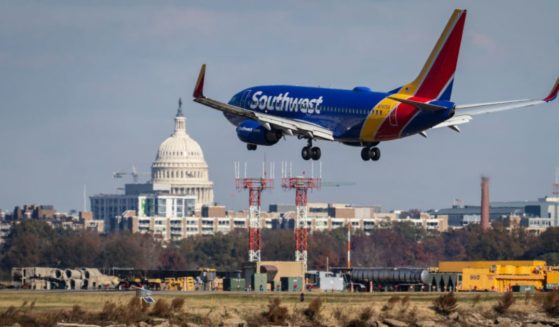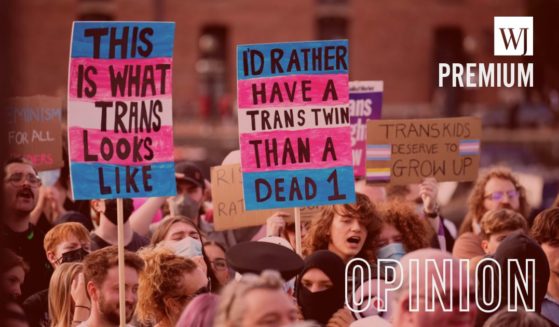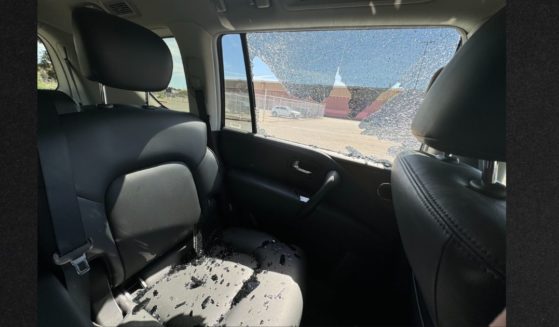Applications for jobless aid fall to lowest in 50 years
WASHINGTON (AP) — The fewest people in nearly 50 years sought unemployment benefits last week, a sign of a strong job market and an unusually low level of layoffs.
Yet the decline in applications for jobless aid isn’t due solely to a tight employment picture. Many states have imposed stricter rules on their unemployment insurance programs — from making it harder to qualify to reducing the duration of benefits to cutting payouts.
The combined effect has been to reduce the number of unemployed people who apply for and receive aid, economists say. Nationwide, just 30% of people out of work now receive unemployment insurance, down from about 40% before the Great Recession.
The historically low level of people seeking aid “tells us we have a strong labor market, and that we’ve made policy changes that mean fewer people can qualify for benefits,” said Martha Gimbel, research director at job listings website Indeed.
Weekly applications for unemployment benefits dropped 8,000 to a seasonally adjusted 196,000 last week, the Labor Department said Thursday . That is the lowest level since 1969. The four-week average, a less volatile measure, fell to 207,000, the also lowest point in 50 years.
The decline is all the more remarkable once you take into account population growth. The size of America’s workforce has doubled since the late 1960s to 162 million.
Still, dwindling unemployment claims send a signal of strength about the job market and the economy. Applications for jobless aid typically track layoffs. So the continuing decline — applications have tumbled for four straight weeks — shows that most businesses are confident enough about future customer demand to keep their staffs intact.
That confidence is spurring more hiring, too: Job growth rebounded last month after a sharp slowdown in February, suggesting that the economy remains resilient in its 10th year of expansion.
Early this year, many analysts were concerned that growth was stalling, with the global economy weakening, the Trump administration and China locked in a trade war, and consumers reining in their spending, as the benefits of the Trump administration’s tax cut have faded. Most Americans got a financial boost last year from the tax cut, but it was a one-time bump.
But falling applications for jobless aid indicate that employers foresee an economic slowdown anytime soon.
Another reason for the decline is that long-term unemployment remains much higher than in previous periods when the unemployment rate fell as low as last month’s figure of 3.8%. People who have been out of work for 27 weeks or more aren’t eligible for unemployment insurance.
In March, 21% of the unemployed were out of work for 27 weeks or more. The last time the unemployment rate fell below 4%, in 2000, the proportion was about half that. And in 1969, less than 5% of those out of work were long-term unemployed.
Policy changes have also played a role. Nine states — Florida, Michigan, Kansas, Georgia, North Carolina, South Carolina, Idaho, Missouri, and Arkansas — have cut the number of weeks recipients can receive aid. Florida and North Carolina have reduced it to as low as 12 weeks. Before the Great Recession, every state provided at least 26 weeks.
And some states have taken steps to make it easier for them to cut off people’s unemployment benefits. Michele Evermore, a senior researcher at the National Employment Law Project, an advocacy group for low-income workers, says nearly a dozen states now require that recipients be cut off if they refuse to take drug tests when they apply for job.
Four states — South Carolina, Pennsylvania, Maryland and Nebraska — have also increased the amount of income people must have previously earned to be eligible for unemployment insurance when they lose their jobs.
Other steps make it less likely that people will even apply in the first place. Most states are pushing people to request benefits online and cutting back on staffing at local unemployment benefit offices where someone could get help in person, the employment law project says. That makes it harder for people without internet access to apply.
Research by Moody’s Analytics last year found that reducing the duration of benefit payments discourages people from seeking aid. When North Carolina cut the maximum length of benefits to 12 to 20 weeks, depending on the unemployment rate, from 26 weeks, applications for jobless insurance fell 12,000 a month, Moody’s concluded.
The impact of these steps is evident in the disparity between layoffs and unemployment insurance claims. According to the government’s Job Openings and Labor Turnover survey, layoffs have hovered around 1.7 million a month since 2013. Yet the number of people seeking unemployment benefits each week has fallen by roughly half since then.
“This is more than just a strong labor market story,” Dante DeAntonio, an economist at Moody’s Analytics, wrote in a report last year. “Fewer claims are being initiated for every laid-off worker.”
The Western Journal has not reviewed this Associated Press story prior to publication. Therefore, it may contain editorial bias or may in some other way not meet our normal editorial standards. It is provided to our readers as a service from The Western Journal.
Truth and Accuracy
We are committed to truth and accuracy in all of our journalism. Read our editorial standards.












